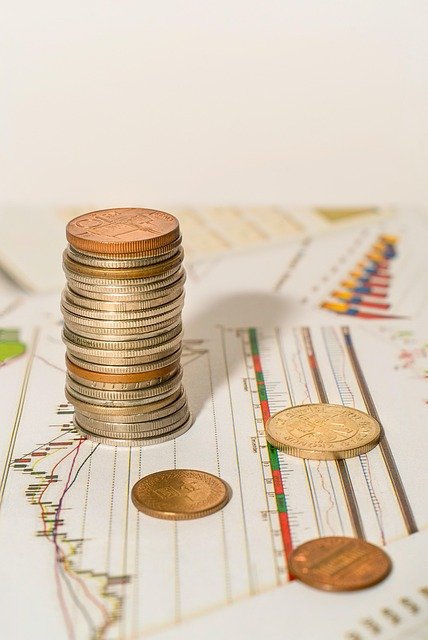Global Economic Indicators and Raw Material Costs
Understanding the interplay between global economic indicators and the costs of raw materials, particularly metals, is essential for various industries and investors worldwide. These materials form the backbone of manufacturing, construction, and technology, making their price movements a critical barometer of economic health. Factors ranging from geopolitical events to technological advancements constantly reshape the supply and demand landscape, influencing market trends and valuation.

Understanding Global Commodities and Market Trends
Global commodities, including a wide array of metals, represent fundamental inputs for industrial production and consumer goods. The market for these raw materials is characterized by constant flux, driven by an intricate web of supply chains, industrial demand, and speculative trading. Tracking market trends offers insights into the broader economic climate, as shifts in commodity prices often signal changes in industrial activity and investor sentiment. The valuation of these resources reflects not only their scarcity and extraction costs but also their perceived future utility in a developing global economy.
Economic Factors Influencing Raw Material Valuation
Several key economic indicators exert significant influence over the valuation of raw materials. Gross Domestic Product (GDP) growth, for instance, directly correlates with industrial demand for metals, as expanding economies typically require more infrastructure and manufactured goods. Inflationary pressures can also drive up raw material costs, as the expenses associated with extraction, processing, and transportation increase. Conversely, a strong currency can make imported commodities cheaper, while a weaker currency makes them more expensive. Central bank policies, interest rates, and overall global economic stability are therefore crucial in shaping the price environment for resources.
Supply and Demand Dynamics in the Industrial Sector
The balance between supply and demand is a fundamental driver of raw material prices, particularly within the industrial sector. On the supply side, factors such as new mineral discoveries, technological advancements in extraction, and geopolitical stability in producing regions can increase availability. Conversely, disruptions like natural disasters, labor strikes, or trade restrictions can severely curtail supply. Demand is primarily dictated by industrial output, construction projects, and the manufacturing of consumer electronics and automobiles. Emerging technologies, such as electric vehicles or renewable energy infrastructure, create new avenues of demand for specific minerals and metals, further impacting their market value.
Forecasting and Investment in Metal Indexes
Forecasting the future prices of raw materials involves complex analytics, drawing on economic models, historical data, and expert opinion. Traders and investors often rely on various metal indexes, which track the performance of baskets of commodities or specific metals, to gauge market sentiment and identify potential investment opportunities. These indexes provide benchmarks for understanding market fluctuations and can be instrumental in developing trading strategies. Investment in raw materials can occur through direct ownership, futures contracts, or exchange-traded funds (ETFs) that mirror commodity prices, allowing participants to speculate on future price movements or hedge against inflation.
Fluctuations and Real-World Cost Insights for Minerals
Raw material costs, especially for minerals and metals, are subject to significant fluctuations due to the dynamic interplay of global economic indicators, supply chain events, and geopolitical developments. These price changes directly impact manufacturing costs, consumer prices, and the profitability of various industries worldwide. Understanding the typical price ranges for common industrial metals can provide a useful benchmark for businesses and investors, though actual transaction prices vary widely based on volume, purity, and market conditions.
| Product/Service | Provider | Cost Estimation (per metric ton) |
|---|---|---|
| Copper Cathode | LME (London Metal Exchange) | $8,500 - $10,000 |
| Aluminum Ingot | LME (London Metal Exchange) | $2,200 - $2,800 |
| Nickel Metal | LME (London Metal Exchange) | $17,000 - $22,000 |
| Zinc SHG | LME (London Metal Exchange) | $2,400 - $3,000 |
| Iron Ore (62% Fe) | Platts (CFR China) | $100 - $130 |
Prices, rates, or cost estimates mentioned in this article are based on the latest available information but may change over time. Independent research is advised before making financial decisions.
Impact of Global Economic Cycles on Raw Material Costs
Global economic cycles have a profound and often predictable impact on raw material costs. During periods of economic expansion and growth, demand for industrial metals and other raw materials typically surges, leading to higher prices. This is driven by increased construction, manufacturing, and consumer spending. Conversely, during economic downturns or recessions, industrial activity slows, reducing demand for raw materials and often leading to price declines. These cycles are influenced by factors such as interest rate adjustments by central banks, government fiscal policies, and broader geopolitical stability, all of which contribute to the ebb and flow of raw material markets and their associated costs.
The global economy’s intricate structure ensures that raw material prices are continuously shaped by a multitude of forces. From the fundamental principles of supply and demand to the broader movements of global economic cycles and investment trends, understanding these dynamics is crucial. The valuation of metals and other commodities serves as a key indicator for economic health, reflecting industrial activity, technological progress, and geopolitical stability across the world.





